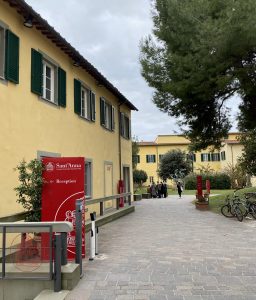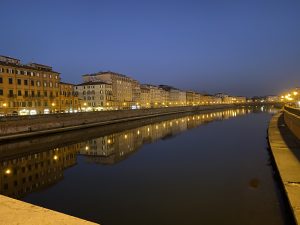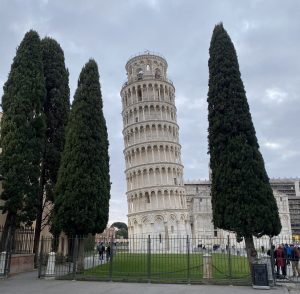Hello! My name is Letizia, and I am a first-year master’s student in Environmental Change and Global Sustainability at the University of Helsinki. Through the HiLIFE Trainee Conference Grant, I had the opportunity to participate in a one-week Seasonal School on agricultural development in Sant’Anna School of Advanced Studies in Pisa (Italy).

The course was built with an interdisciplinary structure, and I had the opportunity to listen to experts ranging from climate science, to agronomy, genetics, and economics. This enabled me to have a better grasp of the complexity of the agricultural sector and of how essential cooperation between different fields is in order to reach agricultural development goals related to food security, sustainability, and climate change adaptation. In this blog post, I will share my experience throughout the week.
But first, why agricultural development?
Food is an essential element in a person’s everyday life. It lies at the base of one’s ordinary activities, as it provides the necessary nutritional requirements for survival. Since the beginning of humankind, the provision of food has stood at the foundation of human existence. Today, things have somewhat remained unchanged, whilst increasing in magnitude and complexity. A global agri-food system has developed, interlinking a wide range of actors and sectors, expanding on different scales and spatial dimensions. The issue of hunger, however, still remains very much relevant.

An expansion of cultivated land, coupled with technical progress, has brought about a huge increase in agricultural productivity in the last century. Today, the quantity of food available can meet the nutritional needs of a population of more than seven billion people. This would have been an astonishing success, except for the fact that it has been accompanied by a very uneven access to resources and distribution of benefits. The world finds itself in front of a paradox, as there should be enough food for all, but almost a billion people are chronically undernourished and more than two billion face various forms of malnutrition. What is more, production intensification practices have caused enormous damage to the planet’s ecosystems, hindering its capacity to feed people sustainably in the future.
How to tackle a complex issue?
The agricultural sector and cropping systems, their structure, and dynamics are key in tackling these complex issues. Agricultural development has a fundamental impact on the reality of food and agricultural production, and it entails an interdisciplinary and intersectoral approach. This was exactly the goal of the course, as the week was structured in such a way that allowed students to have an encompassing and multifaceted vision of agricultural development and its challenges.
The course was structured in modules, and each day we would tackle agricultural development from a different discipline perspective. The first module was about climate science, and the nexus between climate and agriculture. The second module dealt with agrobiodiversity and the potential of agroecological practices and ecosystem services for sustainable agriculture. The third module focused on genetics and breeding methods, including alternative participatory ways to foster varietal development and adoption. The fourth module tackled the social elements in agricultural production, innovation implementation challenges, as well as and the role of inequality. Finally, the last day we tried to connect all the modules through a holistic view and cooperative approaches.
Interdisciplinarity is hard, but fun…
Overall, during the week the atmosphere was very friendly, inclusive, and
stimulating. I got to meet excellent professors, researchers, PhD students, and fellow students from all different fields. We had both traditional lectures, as well as group works, and a lot of interesting discussions! I would say that, if you want to know what it means to do research in an interdisciplinary group in a small university, this is a great way to do it. The location also played its role, as during the evenings we could enjoy the lovely city of Pisa and some great Italian food!


All in all, this opportunity has taught me even more the importance of interdisciplinary research and the value of committed individuals from different backgrounds working together to reach a common goal. I was very inspired from this week, and it helped me to understand a bit better what I would like to do in my future career. I thank Sant’Anna School and HiLIFE for this opportunity!
